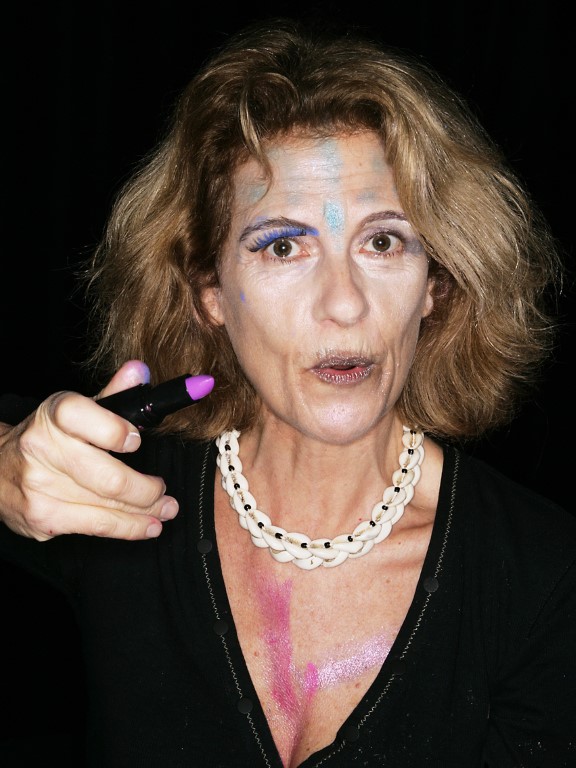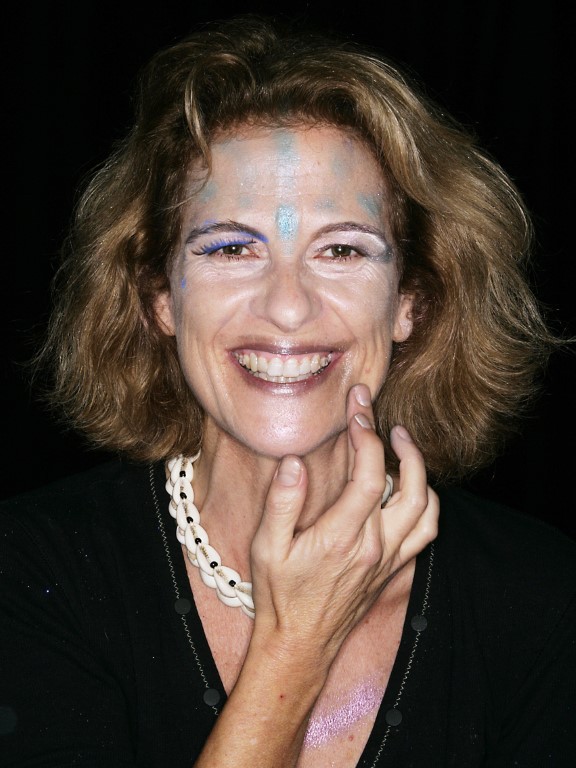PATRICÍA
Quería lanzarme a una aventura sin carta de navegación y crear una máscara más fiel a mi verdad que mi rostro nudo. Durante la sesión hablé mucho, quizás como sortilegio protector, pues sentí la necesidad de exponer mis dolores, en lugar de embellecerme. Me sentí como una vieja sirena que trata de convertir la podredumbre en nácar.
La relación con mi rostro ha cambiado con el tiempo. De joven me sorprendía la pureza de mi piel y me parecía que tenía un rostro bonito. Sin embargo, trabajar como modelo profesional estropeó esa percepción. Nunca era lo suficientemente guapa ni perfecta. Nadie lo es en relación a un ideal abstracto, pero eso no lo supe hasta mucho más tarde. Con el tiempo, me reapropié de mi rostro y ahora estoy agradecida porque mis arrugas muestran que he crecido y sigo viva.
Los estándares de belleza son también estándares de identidades ideales que nos constituyen como personas. Nuestro color de piel, género, edad, estilo, etc., conforman una apariencia que es leída según códigos preestablecidos que nosotros no hemos definido y que resulta muy laborioso deconstruir en lo personal y en lo colectivo.
Nunca me inquieto cuando atiendo reuniones de trabajo, pero, tras muchas semanas de confinamiento y recogimiento profundo, tener que mostrarme ante los demás en formato bidimensional durante mi primera reunión virtual me produjo un cierto desasosiego. Ver mi propia imagen en las reuniones virtuales, me distrae porque tiendo a ‘vigilar’ mi aspecto. Me sorprende que técnicamente no exista el modo de dejar de vernos y asemejar así la experiencia virtual a la presencial.
PATRICÍA
I wanted to embark on an adventure into uncharted territory and create a mask more faithful to my truth than my bare face is. During the session I talked a lot, perhaps as a kind of protective spell, since I felt the need to expose my pain, instead of beautifying myself. I felt like an old mermaid trying to turn rot into mother-of-pearl.
My relationship with my face has changed over time. When I was young, I was surprised by the purity of my skin, and it seemed to me that I had a beautiful face. However, working as a professional model ruined that perception. I was never beautiful enough or perfect enough. No one is beautiful enough when compared to an abstract ideal, but I didn’t realise that until much later. Over time, I reappropriated my face and now I am grateful that my wrinkles show that I have grown and am still alive.
Standards of beauty are also standards of ideal identities that constitute us as people. Our skin colour, gender, age, style, etc., shape an appearance that is read according to pre-established codes that we have not defined and that are very hard to deconstruct personally and collectively.
I never get restless when I attend work meetings, but after many weeks of lockdown and deep retreat, having to show myself to others in a two-dimensional format during my first virtual meeting caused me a certain uneasiness. Seeing my own image in virtual meetings is distracting because I tend to ‘monitor’ my appearance. I am surprised that technically there is no way to avoid seeing oneself and thus make the virtual experience similar to the face-to-face one.



